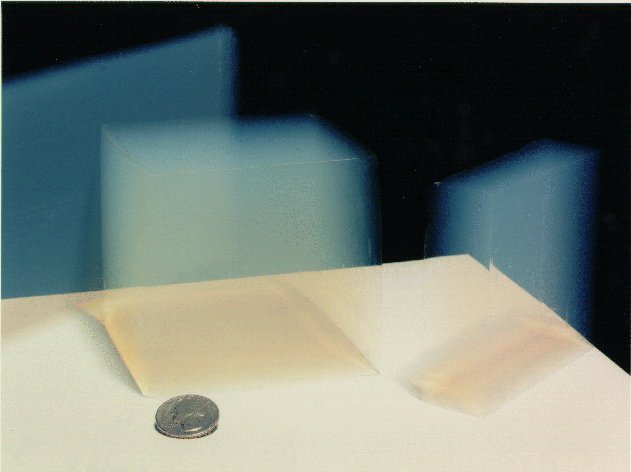 Aerogel
Aerogel
Films of liquid helium-4 adsorbed on the walls of a container display the low-temperature properties of bulk helium, such as the absence of viscosity as a result of Bose-Einstein condensation. It is natural to ask whether this persists down to thin films of atomic thickness.
 Aerogel
Aerogel
An experimental realization is helium adsorbed in porous glass, such as Vycor or aerogel. Superfluidity in these films is destroyed below a critical coverage of 1.5 monolayers. The system undergoes a quantum phase transition to an Bose insulator (or "Bose glass") where the atoms become localized by the random substrate potential. Above the critical coverage, conventional phenomenology, assuming an "inert layer" of localized atoms which coexists with the superfluid, predicts a linear dependence of the superfluid density on the coverage. However, experiments show that this breaks down near the superfluid-insulator transition.
Theoretical efforts have been plagued by the fact that a free Bose theory is pathological - non-interacting bosons would collapse into the lowest bound state. We have developed a sensible starting point for perturbation theory in a dense but weakly-interacting limit of the Bose liquid. We have also introduced a quantum-impurity model to describe how the inert-layer model breaks down near the transition due to enhanced exchange between localized and superfluid atoms.
Recent heat capacity measurements revealed unexpected behaviour in
the insulating phase. In particular, an energy gap appears to
open up in the density of states as the film coverage decreases below
the critical coverage. This contradicts a common belief that the
insulating phase should be gapless, by analogy with the Anderson-localized phase of Fermi systems. There
is a need to develop quantitative models for understanding the
low-energy excitations in this Bose insulator.